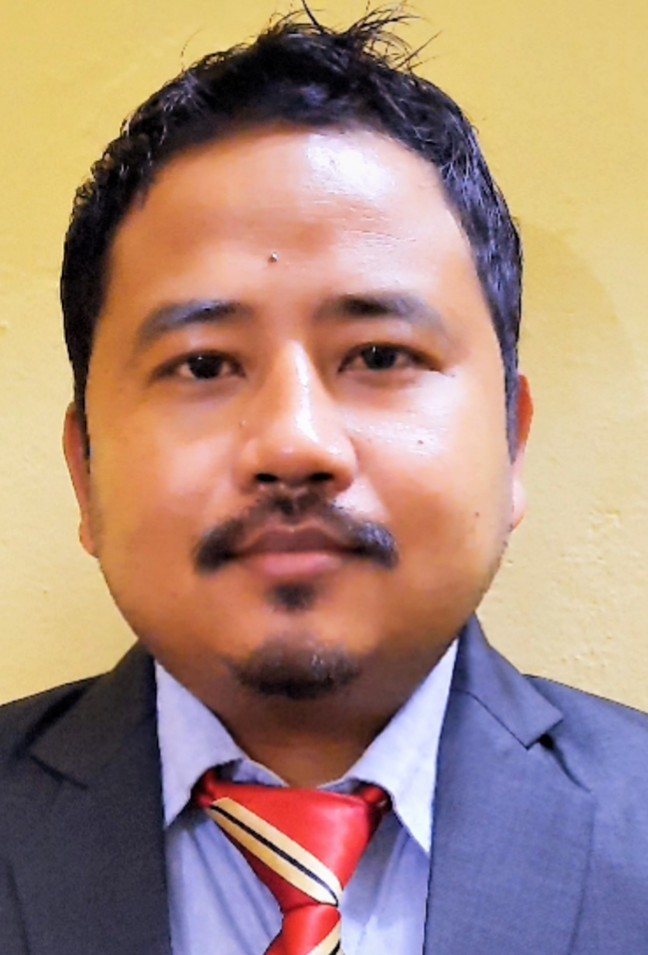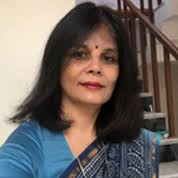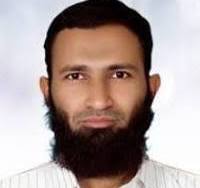Fitness articles list
A comparative study of social and economic aspect of migration
India is a country of immense diversity. It is home to people of many different racial, languages, ethnic, religious, and national backgrounds. Groups of people in India differ from each other not only in physical or demographic characteristics but also in distinctive patterns of behavior and these patterns are determined by social and cultural factors like language, region, religion, and caste. Apart from behaviour, economic development, level of education and political culture of the people in various social segments differ from region to region. More you can say that economy and cultures have been enriched by the contributions of migrants from round the globe. In an increasingly globalised world, migratory movements is continuously shaping the countries all over the world. Some countries like India and Ireland, which set the example of economic development and social integration, have the positive impact of the migration by globalisation and some countries like USA, which recently witness racism, xenophobia and discrimination have the negative impact on the migrants. It does not mean India do not face fragmentation and USA do not have cohesion. USA have many stories which show successful integration process, that facilitated the lives of immigrant communities, but being a developed country it still suffers from cultural alienation. In these countries, borders are built within borders to create cultural divides that do not allow people to integrate. Recently, this problem has become more prominent due to the rise of terrorism, clash of cultures in the world, leading to the glorification of stereotypes. People are becoming less accepting towards anyone who does not belong to their region. Migration does not stop after people move from one place to another place. The main question start after that ‘now what’ they will do. That is why this topic needs to be discussed thoroughly in order to find better solutions. This paper will begin with an analysis of different approaches to Migration, discuss the target groups for integration policies, provide indicators of the current situation of migrants and proceed to an analysis of integration tools: legislation, social policies and participatory processes. It will focus not only on the impact of migration but also on social integration, mix culture like indo-western culture in a comparative basis.
A comparative study of social and economic aspect of migration
India is a country of immense diversity. It is home to people of many different racial, languages, ethnic, religious, and national backgrounds. Groups of people in India differ from each other not only in physical or demographic characteristics but also in distinctive patterns of behavior and these patterns are determined by social and cultural factors like language, region, religion, and caste. Apart from behaviour, economic development, level of education and political culture of the people in various social segments differ from region to region. More you can say that economy and cultures have been enriched by the contributions of migrants from round the globe. In an increasingly globalised world, migratory movements is continuously shaping the countries all over the world. Some countries like India and Ireland, which set the example of economic development and social integration, have the positive impact of the migration by globalisation and some countries like USA, which recently witness racism, xenophobia and discrimination have the negative impact on the migrants. It does not mean India do not face fragmentation and USA do not have cohesion. USA have many stories which show successful integration process, that facilitated the lives of immigrant communities, but being a developed country it still suffers from cultural alienation. In these countries, borders are built within borders to create cultural divides that do not allow people to integrate. Recently, this problem has become more prominent due to the rise of terrorism, clash of cultures in the world, leading to the glorification of stereotypes. People are becoming less accepting towards anyone who does not belong to their region. Migration does not stop after people move from one place to another place. The main question start after that ‘now what’ they will do. That is why this topic needs to be discussed thoroughly in order to find better solutions. This paper will begin with an analysis of different approaches to Migration, discuss the target groups for integration policies, provide indicators of the current situation of migrants and proceed to an analysis of integration tools: legislation, social policies and participatory processes. It will focus not only on the impact of migration but also on social integration, mix culture like indo-western culture in a comparative basis.
Study of temperature variation in human peripheral region during wound healing process due to plastic surgery
In this paper, investigations are made to analyze the human body temperature during wound healing process due to surgery. Wound is considered after the skin graft. Skin graft is a technique used in plastic surgery. Skin is the first line of defense between the human and environment, it is very susceptible to damage. Internal body or core temperature (Tb) is one of the clinical vital signs along with pulse and respiratory rates. Any disturbance in body temperature will drive complexities in wound healing process. These studies are important in the mechanism of establishing the limits of thermal regulation of human body during the healing process in different situations and conditions. The Finite element method is used to analyze tissues temperature for normal tissues (donor site) and abnormal tissues (tissues after surgery). Appropriate boundary conditions have been framed. Numerical results are obtained using Crank Nicolson Method.
Metapuf: a challenge response pair generator
Physically unclonable function (PUF) is a hardware security module preferred for hardware feature based random number and secret key generation. Security of a cryptographic system relies on the quality of the challenge-response pair, it is necessary that the key generation mechanism must unpredictable and its response should constant under different operating condition. Metastable state in CMOS latch is undesirable since it response becomes unpredictable, this feature used in this work to generate a unique response. A feedback mechanism is developed which forces the latch into the metastable region; after metastable state, latch settle to high or state depends on circuit internal condition and noise which cannot be predicted. Obtained inter hamming variation for 8 PUF is 51% and average intra hamming distance is 99.76% with supply voltage variation and 96.22% with temperature variation.
Intersection of caste and gender based subjugation
One of the unique features of Indian society is prevalence of caste system which was originated thousands of years back to demarcate the people engaged in different occupation or jobs. Initially it was not much rigid but gradually people belonging to upper castes for their own selfish means to maintain their monopoly made this arrangement hereditary and started treating people of lower castes disgracefully. For preservation of this system, people started controlling their women to prevent inter-caste marriages and the concept of endogamy came up. This robbed away many types of freedom from women. For women belonging to lower castes, this situation is worse as they are doubly subjugated on the basis on caste as well as gender. Men belonging to their own caste treat them as secondary beings. This paper throws light on this intersection. How intersection of these two kinds of inequalities place them at the lowest position in Indian society. Dr. B.R. Ambedkar rises as their leader who all his life worked for empowerment of downtrodden section of society. He argues that education is the primary tool for evading these differences among people. He further emphasizes to adopt the concept of exogamy to break the backbone of Indian caste system and to immediately leave a religion or culture which legitimizes such system of inequality among people of the same land.
Intersection of caste and gender based subjugation
One of the unique features of Indian society is prevalence of caste system which was originated thousands of years back to demarcate the people engaged in different occupation or jobs. Initially it was not much rigid but gradually people belonging to upper castes for their own selfish means to maintain their monopoly made this arrangement hereditary and started treating people of lower castes disgracefully. For preservation of this system, people started controlling their women to prevent inter-caste marriages and the concept of endogamy came up. This robbed away many types of freedom from women. For women belonging to lower castes, this situation is worse as they are doubly subjugated on the basis on caste as well as gender. Men belonging to their own caste treat them as secondary beings. This paper throws light on this intersection. How intersection of these two kinds of inequalities place them at the lowest position in Indian society. Dr. B.R. Ambedkar rises as their leader who all his life worked for empowerment of downtrodden section of society. He argues that education is the primary tool for evading these differences among people. He further emphasizes to adopt the concept of exogamy to break the backbone of Indian caste system and to immediately leave a religion or culture which legitimizes such system of inequality among people of the same land.
Effect of pranayama on type 2 diabetes on metropolitan people
The purpose of the study was to find out the effect of pranayama on type-2 diabetes on metropolitan people. In the present study researcher wants to observe the effect of pranayama on type 2 diabetes on metropolitan people and to develop a specific package for type 2 diabetes. For this purpose researcher collect 60 sample from nearest diabetic Clinic and Hospital in the city and it is randomly divided into two groups one is experimental and another is control group. In the study researcher used bio-chemistry lab tools. In the study research design used Pre-test, post-test control-experimental group and researcher used two variable type 2 diabetes as dependent and pranayama used as independent variable and in the study there was significant effect of yogic practices on type 2 diabetes.
Ict impediments in performing roles and responsibilities by teaching professionals in the higher education institution
Information and communication technology is an instrument in addressing some of the issues of Indian higher education however; there are certain drawbacks to using ICT to enhance teaching and learning. The present research was carried out in The Maharaja Sayajirao University to study the impediment faced by them in the use of ICT in their professional work. Quantitative data was collected from two hundred and ninety faculty members through the purposive and convenient sampling method. The data indicate that faculty members faced technological infrastructure-related impediments such as lack of smart boards, lack of computers, uneven bandwidth of internet, slow internet connection. It is suggested that an adequate atmosphere be developed in the institution that would encourage faculty members to use ICT.
Basic composition and caloric contents of macrotyloma uniflorum (lam.) verdc., phaseolus lunatus linn., and phaseolus vulgaris linn., legume flours
The % age elemental composition (ash, crude fat, crude protein, moisture and total carbohydrates) was determined in the Macrotyloma uniflorum (Lam.) Verdc., Phaseolus lunatus Linn., and Phaseolus vulgaris Linn., legume flours. M. uniflorum contained moisture (8.9), ash (3.34), crude fat (1.30), crude protein (18.15) and total carbohydrate (68.31). Similarly, moisture (9.14), ash (3.73), crude fat (1.78), crude protein (22.64) and total carbohydrate (62.71) were estimated in P. lunatus. Meanwhile, P. vulgaris contained moisture (9.43), ash (3.61), crude fat (3.49), crude protein (19.46) and total carbohydrate (64.01). The gross, ash free, moisture and ash free calorific values were also determined. P. vulgaris showed the highest(3.91) and P. lunatus lowest (3.84), whereas M. uniflorum (3.86) caloric values (kcal/g), respectively. The elemental composition and caloric values of tested legume flours justify them as good sources of nutrition and energy.
Most Popular Category
- Pharmacy (258)
- Education and social science (216)
- Pharmacology (211)
- Pharmacognosy (173)
- Business management (147)
- Pharmacology and toxicology (132)
- Education and training (126)
- Pharmaceutical sciences (126)
- Research (121)
- Medicine (111)
- Management (98)
- Health Science (96)
- Biological Sciences (93)
- Computer Science (87)
- Human resource management (83)
- Computer Science Applications (80)
- Engineering (77)
- Accounting and finance (73)
- Information technology (67)
- Public health (60)
1.jpg) Ekta Meena
Ekta Meena  Shekhar Boro
Shekhar Boro  Maniar avani
Maniar avani  Dr. Salman Ahmed
Dr. Salman Ahmed